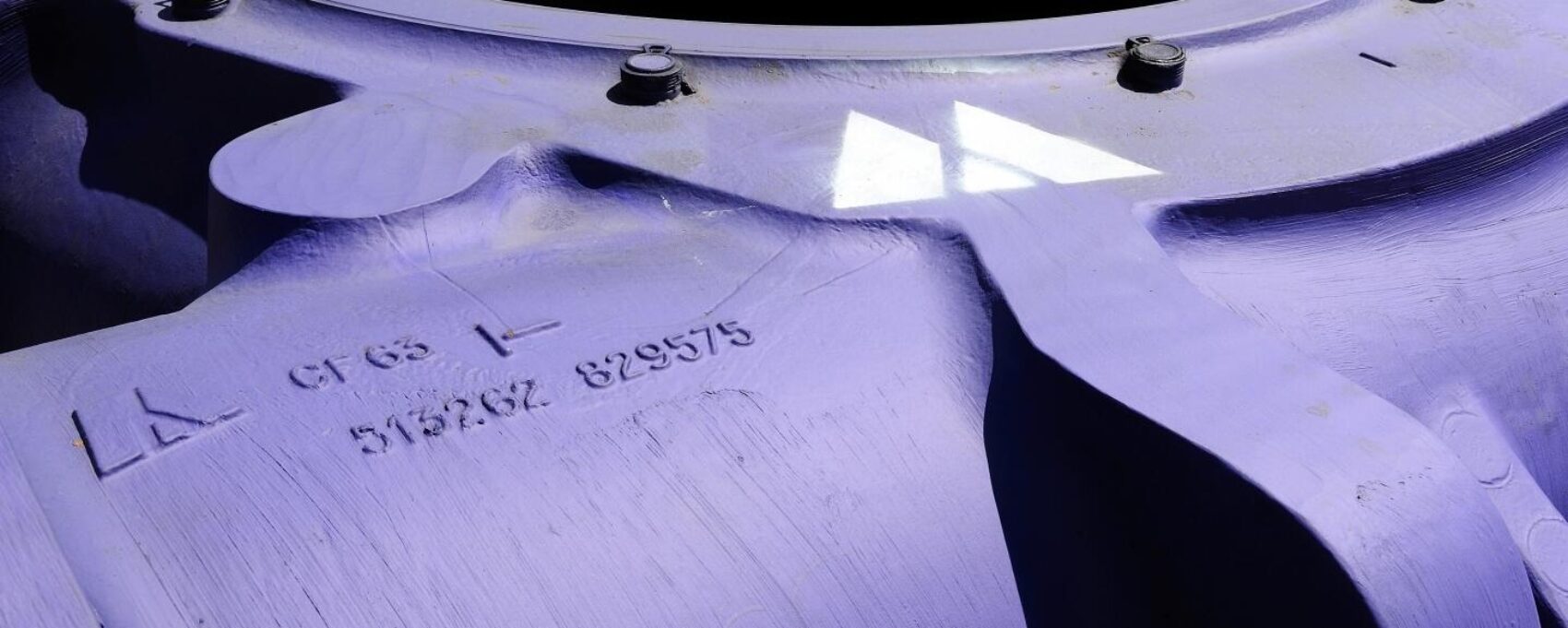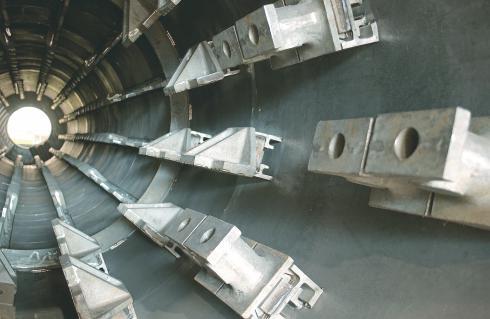
A clinker cooler is a major element of manufacturing clinker. Ground raw meal made from limestone is turned into clinker within a rotary kiln. The raw materials (clay, limestone, and some minor additives) are ground and blended in a raw mill. At this point, the mixture is called raw meal.
When cement clinker leaves the kiln, it is very hot. In fact to transform the raw meal into clinker, the temperature needs to be as high as 1450°C (2642°F). As the name implies, the clinker cooler lowers the temperature and carries the clinker from the kiln. It also provides heated air for the rotary kiln and the preheater.
The clinker is cooled to a temperature of about 150°C (302°F). The temperature cooling process must be carried out swiftly to preserve the clinker’s quality.
To accomplish this goal, air must be forced through the clinker cooler. Many firms use grates to make the cooling flow independent from the clinker bed. Fresh and cold air circulates via the heat resistant cooler grates to rech the clinker bed and reduce its temperature.The clinker’s high temperature also means that heat recovery is called for.
What should you expect from a standout clinker cooler? Here are the functions it will perform for your company:
It will provide you with the correct cooling rate for cement clinker.
The cooler will act as a source of hot air for the preheater and the rotary kiln. It will boost the clinker production line’s thermal efficiency. At the same time, the clinker production line’s energy consumption levels decline.
In some cases, it warms up air to generate waste heat power.
The cooler crushes the clinker. It quenches the clinker to an appropriate (low) temperature so that it can be ground into cement and readied for transport.
As the hot clinker is ejected from the rotary kiln, it falls onto the grate bed. At this phase, the reciprocating grate plate pushes and spreads the hot clinker on the grate bed. It forms a material layer.
Reciprocating Grate Plates. The grate plates are made up of fastened grate plates and movable ones. The plates are positioned in an alternating fashion. The cooler’s transmission drives the movable grate plates (situated between the fastened ones) forward horizontally. The reciprocating motion propels the clinker ahead.
Grate coolers are commonly used to cool clinker. To speed up the process, cool air blows against the clinker flow into the material layer. The cool air is from the lower portion of the bed to bring the temperature of the clinker down. The hot air that results from this process is then used for burning fuel.
The kiln always has a clinker cooling system due to the following factors:
The cooled clinker is crushed into smaller particles mostly by the use of a a hammer crusher.
Once the clinker is sufficiently cooled, it will be ground along with additives and substitutes to be blended into cement. Cement can be transported in bulk on cement lorries, vessels or goods wagons. Cement can also be packed into cement bags for transportation and sale.
A reciprocating clinker cooler plays a very special role in a cement plant. Magotteaux´s specially designed classic coolers grate have a role in reliability and efficiency. Smart engineering has been used to couple a classic cooler grate together with unique alloy development. This allows optimum performance. They are available for a variety of different Original Equipment Designer´s Coolers. The cooler also has more efficient heat recovery than a conventional cooler plate. The production performance is much more stable, and it has improved cooling and lower dust emissions.
Our company has developed new designs and alloys. Together, they bring considerable benefits to conventional clinker coolers by increasing the product’s performance as well as its longevity. The clinker cooler is a crucial element of the kiln line. As such, it is required to take on whatever the kiln tosses at it. Reciprocating clinker coolers represent the best option available on the market.
Magotteaux patented cooler Grate Design provides optimal cooling with the following features:

Magotteaux Cement & cooler grates provide more efficient heat recovery in the clinker cooler than a conventional design.
Magotteaux is your one-stop source where you can get questions answered and advice about any of your clinker cooler concerns. Chat with us about the challenges you are having when processing clinker. Our team has the knowledge and experience to recommend the best solution for your firm’s individual set of circumstances and budget.
Let Magotteaux work with you to find the most suitable wear parts for processing clinker for your company. We know you want to provide a high-quality product while keeping costs under control. Magotteaux shares those values.
Contact us now to talk about the challenges you are facing with your clinker cooler. We will be happy to help you.